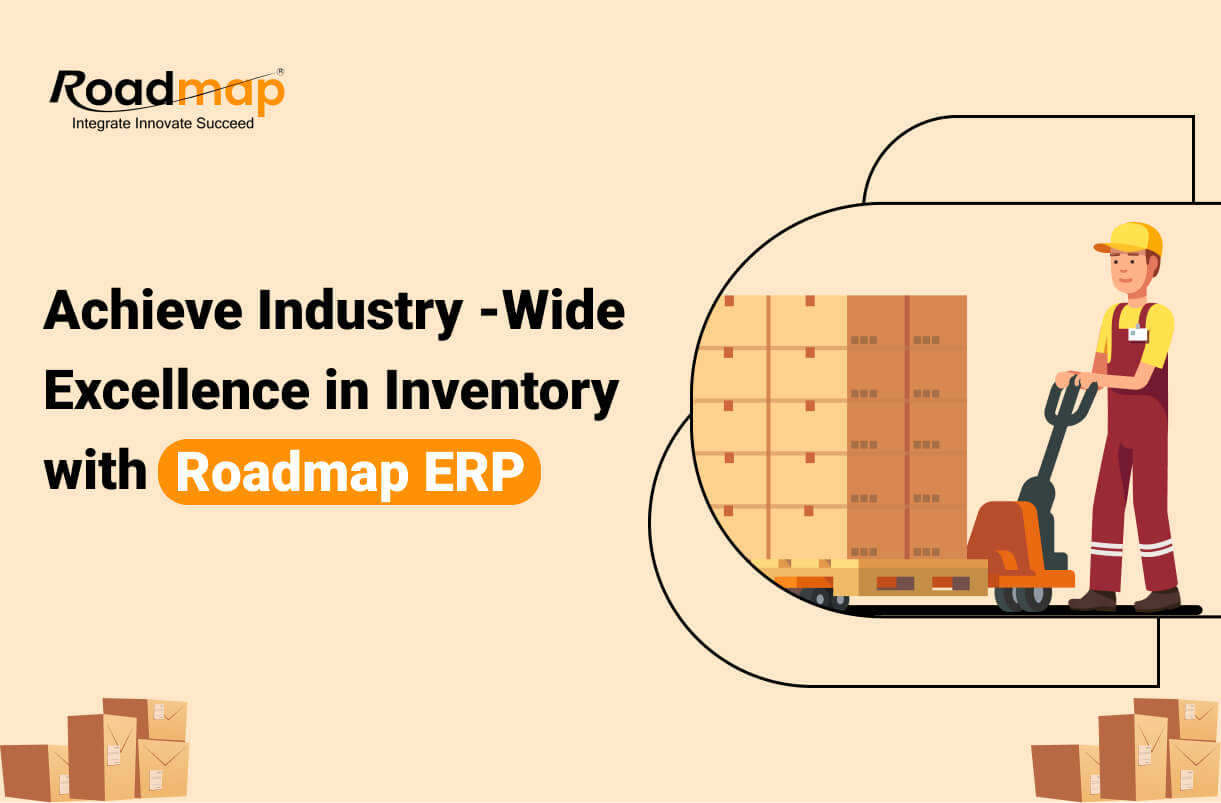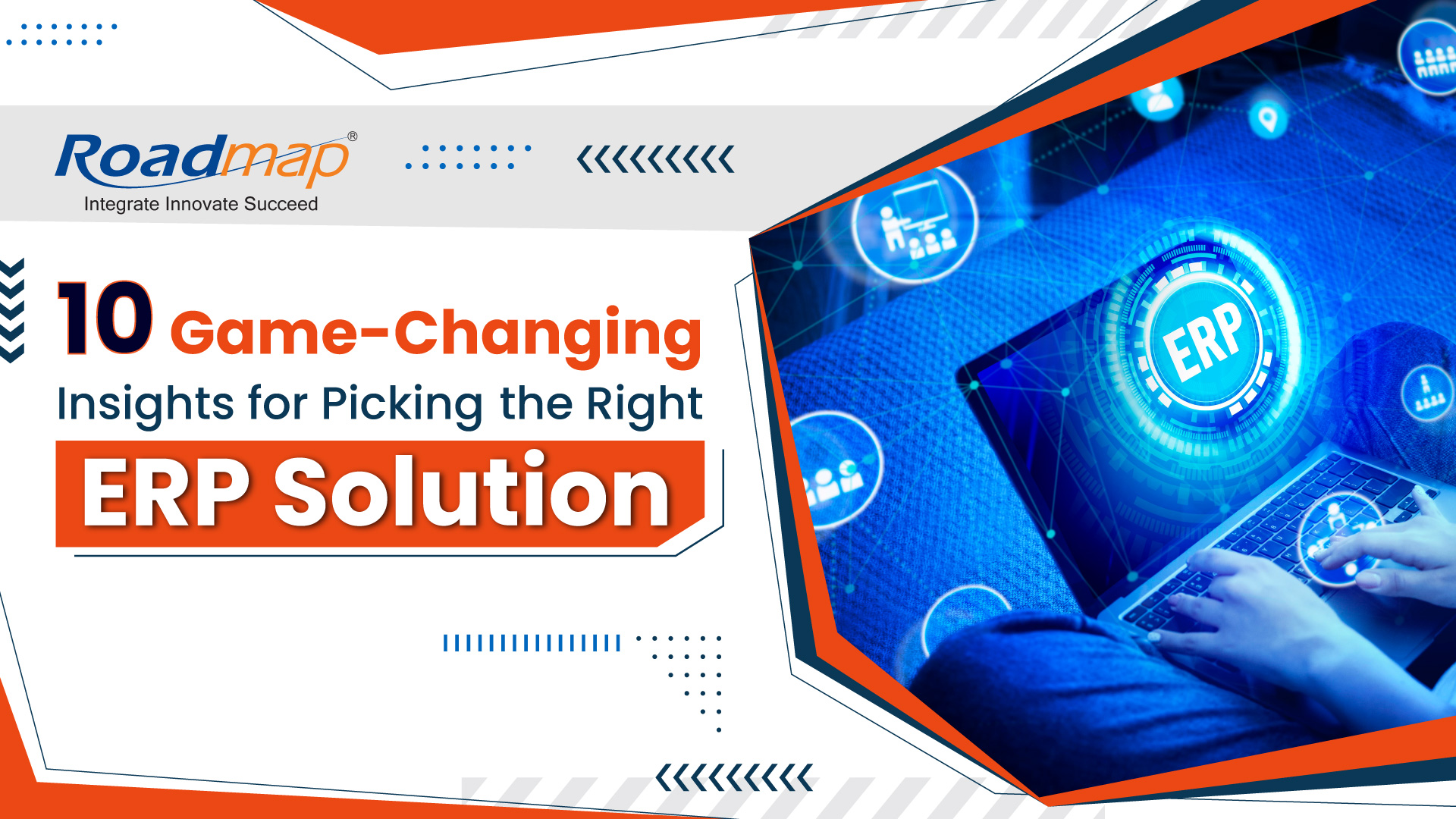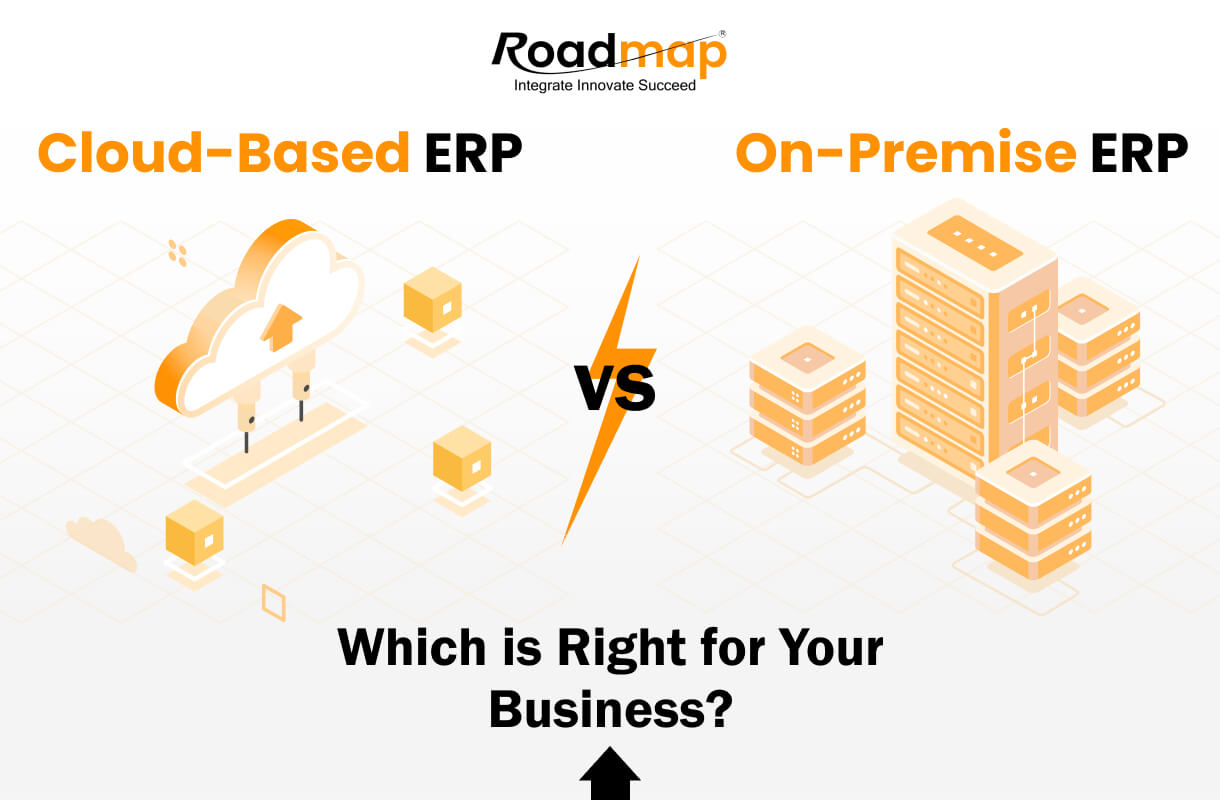Exploring the World of Technopolis Through Blogging

RoadmapIT
Nov 04, 2025
Comments (05)
Achieve Industry-Wide Excellence in Inventory with Roadmap ERP
Effective inventory management is critical to any business, company, or organization that deals with tangible goods. It manages your inventory throughout its lifespan, from purchase to storage and delivery.
So, what exactly is inventory management all about?
Inventory management is the strategic process of vigilantly overseeing and controlling the flow of products and resources within a company to uphold optimal inventory levels. Quality inventory management ensures that your inventory is well-stocked with the right items, in the correct quantities, at the opportune time, and the best value.
Here, we'll delve into some professional recommendations to help you unleash the full potential of your inventory and streamline all inventory operations with the support of the Roadmap ERP system.
Here's a breakdown of the key components of Roadmap ERP Inventory Management:
Real-Time Inventory Tracking: Roadmap ERP system seamlessly integrates with inventory management modules to provide precise, real-time visibility into inventory levels, including raw materials, work in progress (WIP), and finished goods. It leverages barcode and RFID technologies to enable accurate and automated tracking of inventory throughout the supply chain and manufacturing process. This reduces the risk of stockouts or overstocking, ensuring precise inventory management.
Stock Replenishment and Automated Reordering: This defines planning and executing inventory replenishment strategies to ensure that sufficient stock is available to meet demand, as well as managing relationships with suppliers to ensure the timely delivery of materials and goods.
The process involves determining optimal reorder points, quantities, and lead times. By setting up automated reorder points and triggers within the Roadmap ERP system, businesses can streamline the procurement process. When inventory levels fall below predefined thresholds, the system automatically generates purchase orders, eliminating manual intervention and ensuring timely replenishment of materials.
Demand Forecasting: Forecasting future demand for products and materials is a critical aspect of inventory management. It involves analyzing historical sales data, market trends, and customer demand patterns. By doing so, businesses can optimize inventory levels to meet customer needs while minimizing excess inventory holding costs and the risk of stockouts.
Inventory Optimization: Inventory management aims to optimize inventory levels and distribution across multiple locations, warehouses, and manufacturing sites. This includes utilizing inventory optimization techniques such as ABC analysis, economic order quantity (EOQ) optimization, and just-in-time (JIT) inventory management to reduce carrying costs, increase inventory turnover rates, and improve overall operational efficiency.
Inventory Control: Inventory control involves implementing controls to prevent inventory shrinkage, theft, and obsolescence. This includes adopting inventory monitoring systems, conducting regular inventory audits, and establishing security protocols to safeguard inventory assets and ensure accurate inventory records.
Cost Management: Inventory management involves managing the costs and expenses incurred in moving, storing, and maintaining inventories. This includes monitoring inventory carrying costs, storage expenses, and ordering costs to identify cost-cutting options and increase overall profitability.
Performance Measurement: Inventory management comprises the measurement and analysis of key performance indicators (KPIs) such as inventory turnover, fill rates, stockout rates, and carrying costs. Monitoring KPIs allows firms to assess the success of their inventory management procedures, identify areas for improvement, and apply initiatives to optimize inventory management processes.
Continuous Improvement: Inventory management comprises the measurement and analysis of key performance indicators (KPIs) such as inventory turnover, fill rates, stockout rates, and carrying costs. Monitoring KPIs allows firms to assess the success of their inventory management procedures, identify areas for improvement, and apply initiatives to optimize inventory management processes.
3. Scalability and Flexibility
Your business is dynamic, and so should your ERP system be. Look for a solution that can grow with your business, whether you’re planning to expand operations, enter new markets, or scale your workforce.
Questions to Ask:
- Can the ERP handle an increase in users and data volume?
- Does it support multi-location or multi-currency operations?
4. Ease of Use and User Adoption
A robust ERP system is useless if your team struggles to use it. The system should have an intuitive interface and require minimal training. Many modern ERPs come with dashboards, drag-and-drop functionalities, and role-based access, which can simplify the user experience.
Key Tip: Involve your team in the decision-making process. Conduct demos and trials to gather feedback on ease of use.
5. Integration Capabilities
In today’s interconnected world, your ERP should seamlessly integrate with other software applications like CRM, e-commerce platforms, and third-party logistics systems. A well-integrated ERP eliminates data silos and provides a unified view of operations.
Key Tip: Ask vendors about API capabilities and compatibility with your existing software stack.
6. Deployment Options: On-Premise vs Cloud
ERP systems can be deployed in two primary ways:
- Cloud-based: Hosted on the vendor’s servers, offering accessibility from anywhere with an internet connection.
- On-premise: Installed locally on your company’s servers, offering greater control but requiring higher upfront costs.
Considerations:
- For SMBs, cloud ERP may be ideal due to lower costs and scalability.
- For larger enterprises with strict security protocols, on-premise might be a better fit.
7. Total Cost of Ownership (TCO)
ERP systems involve more than just the upfront licensing fees. You must consider the total cost of ownership, including:
- Implementation costs.
- Training expenses.
- Maintenance and support fees.
- Future upgrade costs.
Key Tip: Choose a solution that fits your budget without compromising essential features.
8. Vendor Reputation and Support
The reliability of your ERP vendor can significantly impact your ERP experience. Research their track record, customer reviews, and experience in your industry. Additionally, ensure they provide robust support services for troubleshooting and system updates.
Questions to Ask:
- What is the average response time for support?
- Are there any hidden costs for post-implementation support?
9. Security and Compliance
With increasing cybersecurity threats, your ERP system must prioritize data protection. Features like encryption, role-based access control, and multi-factor authentication are essential. Moreover, ensure the system complies with relevant regulations such as GDPR or industry-specific standards.
Key Tip: Ask vendors about their data backup protocols and disaster recovery plans.
10. Reporting and Analytics
One of the biggest advantages of an ERP system is its ability to provide real-time insights into your business operations. Look for a system that offers customizable dashboards, KPI tracking, and advanced analytics.
Key Tip: Ensure the ERP system supports predictive analytics to help you make proactive business decisions.
Final Thoughts: The Road to Success
Choosing the right ERP solution is a journey that requires careful evaluation and planning. By focusing on your business needs, scalability, user-friendliness, and integration capabilities, you can find a system that aligns with your goals. Remember, the right ERP is not just a tool—it’s a strategic investment that drives your business forward.
Looking for an ERP solution tailored to your industry? Contact Roadmap IT Solutions today to discover how we can transform your business challenges into growth opportunities!
ERP ERPSoftware ERPImplementation




